There might be affiliate links on this page, which means we get a small commission of anything you buy. As an Amazon Associate we earn from qualifying purchases. Please do your own research before making any online purchase.
You're excited. You feel that this time will be different.
I want it bad enough. I can do this.
You start making plans. Maybe, you take the first step.
But then its gone. After a few hours or a few days, you're back to normal. Feeling mundane, doing the mundane.
Why?
Two reasons.
Problem 1. Inspiration escapes as quickly as it enters.
Hunger is natural. When we ignore it, it gets stronger and stronger until all we can think about is food.
Inspiration is unnatural. With the passage of time, it leaks out of our body, as if it doesn't belong.
No surprise – it doesn't.
Hunger comes, whether we want it to or not. Inspiration doesn't.
That's why we read inspirational books and videos, again and again and again and again. But watching inspirational videos and reading uplifting stories takes time and has an inconsistent effect, sometimes getting us excited, other times leaving us bored.
That's why personal coaches and motivational speakers are so fond of positive visualization. Of imagining your desires having already come true. That's inspiring.
Unfortunately, inspiration isn't enough.
Problem 2. Inspiration unconverted to motivation feels good but doesn't lead to action.
How often have you felt excited and then done nothing to show for it?
There isn't some sort of excitement threshold, past which you actually start getting your goals done. Excitement is like salt water – by itself, completely useless. It takes a purifier to change it into something useful.
Goal setting isn't primarily effective because it's inspiring, but because it converts transient desire into long-term focus and commitment. It's a purifier.
But often, it's not enough.
The Secret is wrong. The Law of Attraction isn't enough.
For those who aren't familiar, the law of attraction suggests that thinking positive thoughts can bring about positive results. On the one hand, this is partially true – positivity is correlated with performance in a variety of domains.1, 2, 3, 4, 5 Happiness is powerful.
On the other hand, Lady Gaga is right when she suggests that images of success can take the place of actual action. Instead of going out and making it happen, we visualize in our heads, feel good, and then do nothing. The fantasy replaces the reality.
We know this is true in two ways. One, many self-help programs have conquered problem 1 (inspiration escapes as quickly as it enters) yet still have abysmal success rates. Two, Gabriele Oettingen took a more critical look at the effects of visualization.
Visualization generates inspiration, not motivation.
Typical instructions for visualization suggest closing your eyes and imagining yourself having achieved your goal in as much detail as possible. Visualizing a sexy body, happy family, big house, confidence, contentment, whatever.
Visualization has the impact of focusing our attention and of making success seem more likely. Focus attention? Yes, good. Make success seem more likely? No, bad.
If you've been following along the series, in the last step, you selected a challenging but doable sub-goal. Remember, your subconscious is hyper-efficient. It allocates only as much energy as is needed to accomplish its goals – anything more would be a waste. That's why you picked something challenging but doable.
That's why visualization and similar techniques generate inspiration, but paradoxically make you less likely to take action.
In the past, there were no TVs or fantasy novels. What you could imagine was limited to reality – the brain didn't use visualization as a form of fantasy escape, but of planning and consideration. What you were able to easily visualize, your brain assumed real and easily attainable.
If I can so easily visualize it, it must not be that hard to get. In which case, I don't need much motivation. Instead, I should get excited. After all, the goal is easier to accomplish than I previously thought. Reward, come to papa!
No! We want excitement and more motivation, not excitement and less motivation!
That's what goal setting and mental contrasting are for.
Mental contrasting generates inspiration and then converts it to motivation.
Mental contrasting has been shown to:
- Improve academic performance, leading to higher quiz grades and significantly more time spent preparing for standardized tests.6, 7
- Improve health, prompting more exercise, less unhealthy snack consumption, and more fruit intake.8, 9, 10
- Increase help-seeking and help giving behavior.11
- Increase the likelihood of taking steps to reduce cigarette consumption.12
In those same studies, those in the mental contrasting group did better, on average, than those in the visualization group.
The technique has two steps: 1) get excited, and 2) get motivated.
Get excited.
Think about the positive reasons you're pursuing your goal. The more positive reasons you can think of, the better. Then think about two or three negative counterfactuals (e.g. “if I fail to complete this goal, I will have an unhappy marriage.”)
You'll be coming back to these reasons often, so jot them down if you need to. Now, visualize in detail the most impactful reasons you thought of a moment ago.
Get motivated.
Think about several obstacles in the way of you completing your goal. For example, if you’re trying to lose weight, those obstacles could be: being tempted by snacks, purchasing unhealthy food while shopping, eating too much at dinner, emotional binging, or lack of motivation to exercise.
You'll be coming back to these obstacles often, so jot them down if you need to. Now, visualize in detail the biggest obstacles you thought of a moment ago.
What you're doing is tying together the promise of reward in the future with obstacles which must be overcome in the present. You, the conscious, already understood (do x and receive y), but your subconscious didn't.
Your thoughts of grandeur and accomplishment? Nope. Visualization in the form of mental contrasting? That works.
Inspiration into motivation.
Do it at least once – it'll take less than 5 minutes. Most of those great results that I mentioned above occurred in studies where mental contrasting was used just once, at the same time as the goal was set.
But I've found that the more often I do it, the better.
What are the biggest benefits you expect from completing your goal? What are the biggest obstacles in your way?
Write it down. Share by leaving a comment below!
Inspiration Box
|
Goal Setting
|
Fitness
|
Wealth
|
Happiness
|
-
- Latham 1974 – 1 day goal setting workshop given to 20 tree loggers increased productivity over the following 3 months, valued at a quarter-million dollars.
- Cambell 1976 – Chess players given a hard goal were more likely to successfully complete higher-level chess problems.
- Ivancevish 1976 – Sales personal given training in goal setting sold more.
- Becker 1978 – Two groups of people given goals on conserving energy. Those given the easy goal did no different, while those given the hard goal cut household energy expenditure by 14% over the duration of the study.
- Latham 1978 – Typists given hard goals increased their performance.
- Latham 1982 – 39 truck drivers were assigned goals. Over the following four months, their performance increased, being valued at $2.7 million dollars.
- Reber 1990 – Factory workers walked through a goal setting workshop and provided feedback increased safety compliance from around 50% to almost 100%.
- Rothman 2005 – Smokers helped in setting quit goals were almost twice as likely to have abstained after a quit attempt. This held true even after 18 months.
- Seo 2009 – Students walked through the goal setting process were less likely to procrastinate.
Read Building a Practically Useful Theory of Goal Setting and Task Motivation: A 35-Year Odyssey for more.
A goal is a dream with a deadline.
–Napolean Hill
All who have accomplished great things have had a great aim, have fixed their gaze on a goal which was high, one which sometimes seemed impossible.
–Orison Marden
Failures do what is tension relieving, while winners do what is goal achieving.
–Dennis Waitley
Learn from the past, set vivid, detailed goals for the future, and live in the only moment of time over which you have any control: now.
–Dennis Waitley
Goals are the fuel in the furnace of achievement.
–Brian Tracy
If you don't know where you are going, you'll end up someplace else.
–Yogi Berra
In absence of clearly defined goals, we become strangely loyal to performing daily acts of trivia.
-Unknown
The person with a fixed goal, a clear picture of his desire, or an ideal always before him, causes it, through repetition, to be buried deeply in his subconscious mind and is thus enabled, thanks to its generative and sustaining power, to realize his goal.
–Claude M. Bristol
Far better it is to dare mighty things, to win glorious triumphs, even though checkered by failure, than to take rank with those poor spirits who neither enjoy much nor suffer much, because they live in the gray twilight that knows not victory nor defeat.
–Theodore Roosevelt
Failure is not reaching your goal, but in having no goal to reach.
–Benjamin Mays
Think little goals and expect little achievements. Think big goals and win big success.
–
David Joseph Schwartz
The reason most people never reach their goals is that they don't define them, or ever seriously consider them as believable or achievable. Winners can tell you where they are going, what they plan to do along the way, and who will be sharing the adventure with them.
–Denis Watley
The higher goal a person pursues, the quicker his ability develops, and the more beneficial he will become to the society. I believe for sure that this is also a truth.
–Maksim Gorky
“If you want to be happy, set a goal that commands your thoughts, liberates your energy and inspires your hopes.
–Andrew Carnegie
If you're bored with life — you don't get up every morning with a burning desire to do things — you don't have enough goals.
–Lou Holtz
Setting goals is the first step in turning the invisible into the visible.
–Tony Robbins
The last three or four reps is what makes the muscle grow. This area of pain divides the champion from someone else who is not a champion. That’s what most people lack, having the guts to go on and just say they’ll go through the pain no matter what happens.
–Arnold Schwarzenegger
The only limitations one has, are the ones they place on themselves.
–Muhammad Ali
Winners compare their achievements with their goals, while losers compare their achievements with those of other people.
–Nido Qubein
Success is the sum of small efforts, repeated day in and day out.
–Robert Collier
Pain makes me grow. Growing is what I want. Therefore, for me pain is pleasure.
–Arnold Schwarzenegger
One man has enthusiasm for 30 minutes, another for 30 days, but it is the man who has it for 30 years who makes a success of his life.
–Edward B. Butler
If we each get on a treadmill right now, one of two things is going to happen… either you’re going to get off first or I am going to die. Period.
–Will Smith
A year from now you will wish you had started today.
-Karen Lamb
Life begins at the end of your comfort zone.
–Neale Donald Walsch
Once you learn to quit, it becomes a habit.
–Vince Lombardi
Do not pray for an easy life, pray for the strength to endure a difficult one.
–Bruce Lee
Just do it.
–Nike
If you don't do what's best for your body, you're the one who comes up on the short end.
–Julius Erving
If you want to look young and thin, hang around old fat people.
–Jim Eason
You have to stay in shape. My grandmother, she started walking five miles a day when she was 60. She's 97 today and we don't know where the hell she is.
–Ellen Degeneres
Take care of your body. It's the only place you have to live.
–Jim Rohn
No one can cheat you out of ultimate success but yourself.
–Ralph Waldo Emerson
My philosophy of life is that if we make up our mind what we are going to make of our lives, and then work hard toward that goal, we never lose, somehow, we win out.
–Ronald Reagan
I like thinking big. If you're going to be thinking anything, you might as well think big.
–Donald Trump
Lazy men are soon poor; hard workers get rich. A wise youth makes hay while the sun shines, but what a shame to see a lad who sleeps away his hour of opportunity.
–The Living Bible
An average person with average talent, ambition and education, can outstrip the most brilliant genius in our society, if that person has clear, focused goals.
–Brian Tracy
The man says, ‘If I had a fortune, I'd take good care of it. But I only have a paycheck and I don't know where it all goes.' Wouldn't you love to have him running your company?
–Jim Rohn
Inaction breeds doubt and fear. Action breeds confidence and courage. If you want to conquer fear, do not sit home and think about it. Go out and get busy.
–Dale Carnegie
A year from now you will wish you had started today.
-Karen Lamb
All growth is a leap in the dark, a spontaneous and unpremeditated act without benefit of experience.
–Henry Miller
Wealth depends chiefly on two words, industry and frugality; that is, waste neither time nor money, but make the best use of both.
–Benjamin Franklin
Something in human nature causes us to start slacking off at our moment of greatest accomplishment. As you become successful, you will need a great deal of self-discipline not to lose your sense of balance, humility, and commitment.
–Ross Perot
The art is not in making money, but in keeping it.
Opportunity is missed by most people because it is dressed in overalls and looks like work.
–Thomas Edison
If you would be wealthy, think of saving as well as getting.
–Ben Franklin
When I was young I thuoght that money was the most important thing in life; now that I'm old I know it is.
–Oscar Wilde
It is not the creation of wealth that is wrong, but the love of money for its own sake.
–Margaret Thatcher
For every minute you are angry you lose sixty seconds of happiness.
–Ralph Waldo Emerson
If more of us valued food and cheer and song above hoarded gold, it would be a merrier world.
–J.R.R. Tolkien
Happiness is the consequence of personal effort. You fight for it, strive for it, and insist upon it.
– Elizabeth Gilbert
It's been my experience that you can nearly always enjoy things if you make up your mind firmly that you will.
– L.M. Montgomery
Happiness is having a large, loving, caring, close-knit family in another city.
–George Burns
Tell the negativity committee that meets inside your head to sit down and shut up.?
–Ann Bradford
A bad attitude is like a flat tire, you can’t get very far until you change it.
Happiness is not something you postpone for the future; it is something you design into the present.
-Jim Rohn
Life is not about making others happy. Life is about sharing your happiness with others.
If your happiness depends on what somebody else does, you do have a pretty big problem.
–Richard Bach
Someone else is happy with far less than what you have.
Talk about your blessings more than you talk about your problems.
Those who bring sunshine to the lives of others cannot keep it from themselves.
–James M. Barrie
I am determined to be cheerful and happy in whatever situation I may find myself. For I have learned that the greater part of our misery or unhappiness is determined not by our circumstance but by our disposition.
–Martha Washington
Most folks are as happy as they make up their minds to be.
–Abraham Lincoln
Happiness is not a feeling, it is a choice.</span
Return to top.
Previous Post: Difficult, Not Easy
Next Post: Performance or Mastery?
References
1. The Role of Positivity and Connectivity in the Performance of Business Teams: A Nonlinear Dynamics Model
Positive Affect and the Complex Dynamics of Human Flourishing
2. Nice To Know You: Positive Emotions, Self–Other Overlap, and Complex Understanding in the Formation of a New Relationship
3. Marital Processes Predictive of Later Dissolution: Behavior, Physiology, and Health
4. Altering Positive/Negative Interaction Ratios of Mothers and Young Children.
5. Positivity and Well-being Among Community-Residing Elders and Nursing Home Residents: What Is the Optimal Affect Balance?
6. Self-regulation strategies improve self-discipline in adolescents: Benefits of mental contrasting and implementation intentions.
7. Mental contrasting facilitates academic performance in school children.
8. When planning is not enough: Fighting unhealthy snacking habits by mental contrasting with implementation intentions (MCII).
9. Mental contrasting instigates goal pursuit by linking obstacles of reality with instrumental behavior.
10. Mental contrasting of a dieting wish improves self-reported health behavior.
11. Mental contrasting and the self-regulation of helping relations.
12. Self-regulation of commitment to reduce cigarette consumption: Mental contrasting of future with reality.



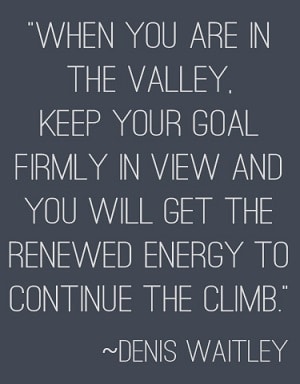
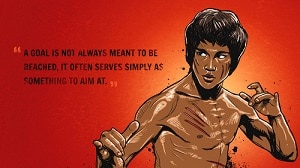
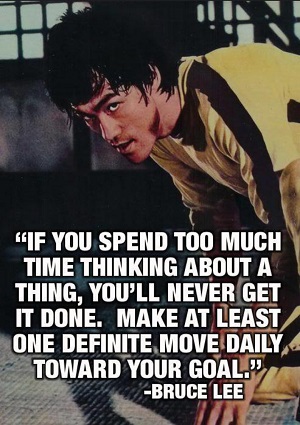


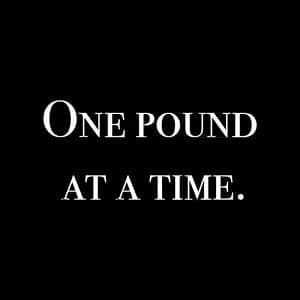


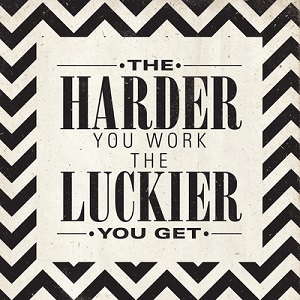
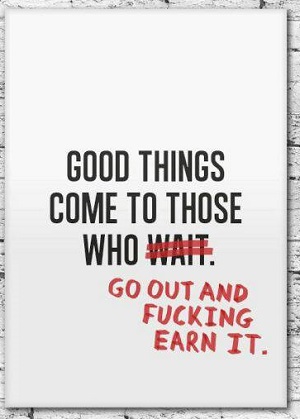
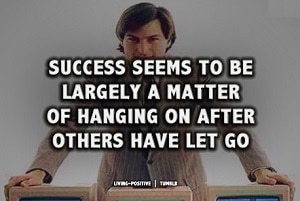
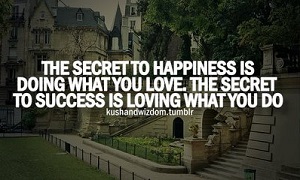
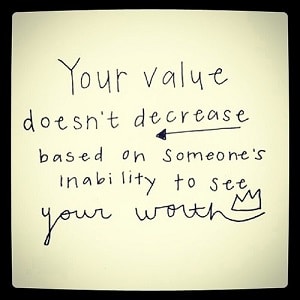
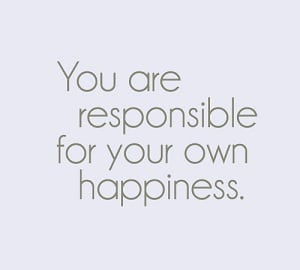
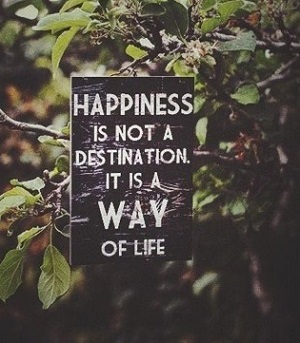
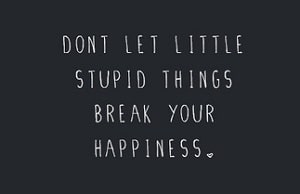
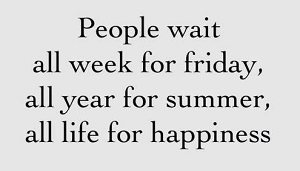

Your point about inspiration not being converted to motivation is so true. It feels good and you get that momentary high of feeling good about it, but in the end, it doesn’t do anything because it fades quickly. Then you need to search it out again, but you never actually do anything with it. It reminds me of some inspirational videos I’ve seen on Youtube. They get you feeling good and inspired, but that’s it. You don’t take the changes you need to do.
I like your idea of finding positive reasons to pursue your goal. That, to me, seems like it would be both inspiring and motivational. It wouldn’t fade as quickly as you could keep that in your mind as you work towards it. Goals take a long time so you need to find something to keep you going.
Great Post.. Although converting inspiration into motivation is not always just a visualisation away.. Also trying to imagine the obstacles might backfire as well because you might have a tendency to listen to other people or use the same level of thinking you’ve always usen (and that got you to where you are atm)..
But it’s a good point your making. How to convert inspiration into motivation. I think different people will have to approach this differently
I always try to teach people to face their current realities – to understand what needs to be altered. I have done so much with my personality but it did take 6 years of practice (feeling/visualization). Visualizing creates the feeling. That is how it manifests into the quantum.
I love this article! Thank you. I will share with my single advice column. ~Evie Michelle